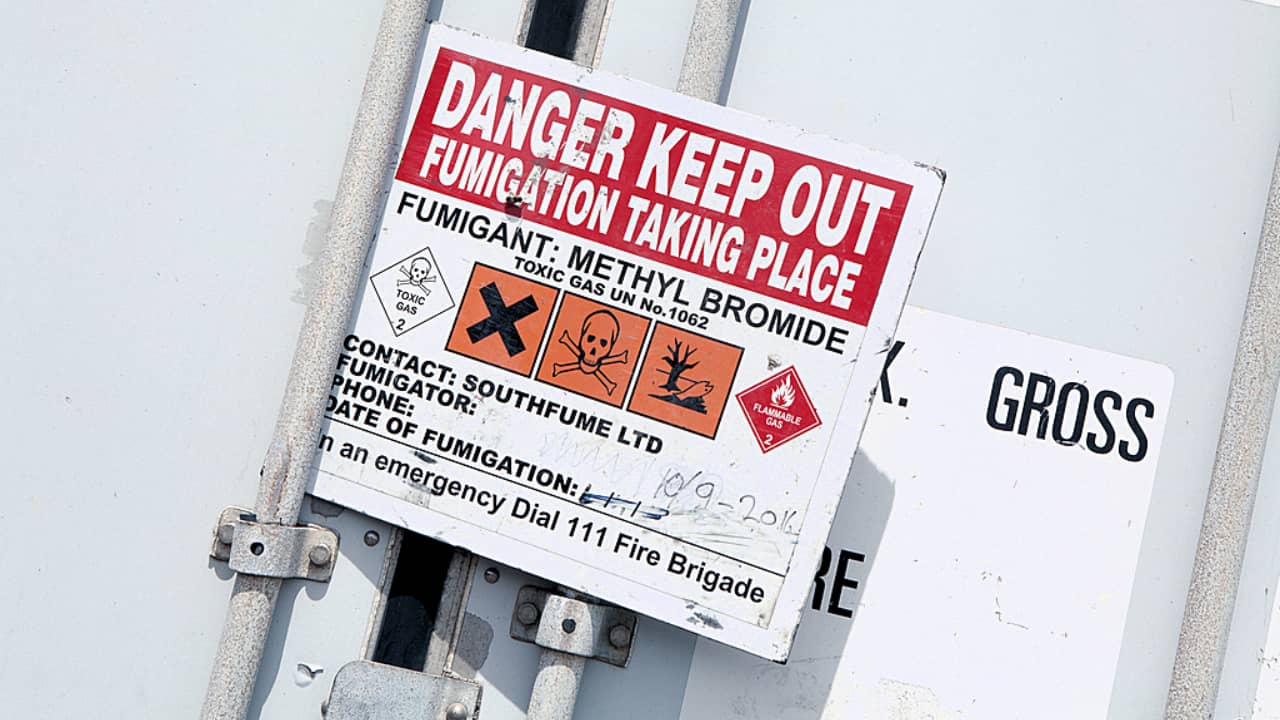
Your Import Shipping Container Could be Full of Toxic Gas
2-minute read
The researchers’ investigations found 20% of the containers sampled had gas concentrations above safe levels. In the worst case, methyl bromide was found in one container at a level of 50,000 parts per billion — 100 times more than the safe level.
Customs external relations manager Helen Keyes confirmed that her organisation was one of many parties participating in further research on the issue.
“Massey University’s Centre for Public Health Research is currently conducting research into personal exposures and possible health effects of workers who may be exposed to fumigants,” Keyes told Special Industry Review.
In the meantime, Customs’ focus remained on frontline staff employing a range of mitigation techniques, she said.
“Current fumigant detection practices minimise and protect staff from fumigant risks when examining containers. They include testing for the presence of fumigants, the use of personal protection equipment when opening container doors to vent and natural or mechanical venting using ram or extraction fans.
“We are working with the Ministry of Business, Innovation and Employment to confirm that our processes reflect the most effective means of mitigating fumigant risk.
Maritime Union of New Zealand (MUNZ) national secretary Joe Fleetwood expressed concern the Syft study appeared to be limited to the potential risks to customs staff and called for a renewed focus on the health and safety of the entire waterfront workforce.
“Where this leaves waterside workers and other port workers dealing with the same containers is a good question,” he said.
“It raises the possibility that other research or information could be withheld by individual agencies instead of full transparency and openness.”
Fleetwood, who called for a full safety audit of imported shipping containers in light of the Syft findings, says the use of methyl bromide in the ports and shipping industry is of particular concern.
“The MUNZ position remains that we advocate the full phase-out of methyl bromide as soon as possible while supporting the use of full recapture technology as an interim measure.
“The Environmental Risk Management Authority has notified that full recapture technology has to be in place by 2020 but the MUNZ view is that this is far too long. “Some progress has been made with the announcement of the commitment to move to the full recapture of methyl bromide at CentrePort this financial year. Port Nelson already has full recapture.”
He expresses concern that restructuring of the former Department of Labour and changes to health and safety legislation could potentially see the management and responsibility for the methyl bromide threat falling between different state agencies.
“In addition, the use of outside contractors working for stevedores operating within ports means there is a diffusion of responsibility for oversight in the workplace.”
Source: NZ Shipping Gazette
We’d love to answer any of your questions! Contact us now
P.S. Do you know of other people that will find this article useful? Please share it on social media. Thank you!
